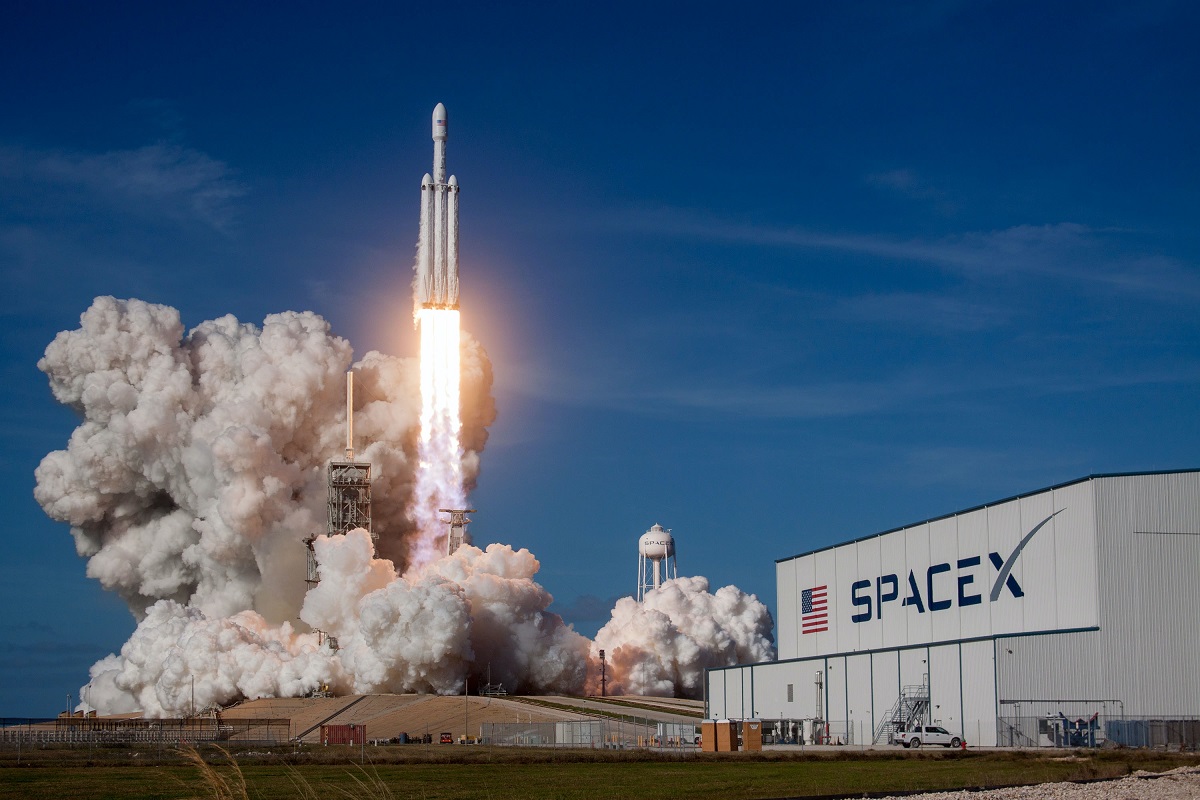
SpaceX’s Falcon 9 Rocket Launch
- Santiago Cooper
- April 11, 2023
- Business, News, Tech & Gadgets
- 0 Comments
SpaceX’s Falcon 9 Rocket has launched 31 times in the past 12 years. The rocket has nine Merlin engines and is about 230 feet tall, and it weighs 1.2 million pounds. It can carry up to 50,000 pounds to low Earth orbit. It can also re-start multiple times. The rocket uses liquid oxygen and rocket-grade kerosene as propellants.
During the past decade, SpaceX has become an industry giant. The company currently handles two-thirds of NASA’s launches. Its rockets can cost up to $62 million, which is significantly less than flights on United Launch Alliance rockets. The company is also working on a Moon lander and testing a heavy-lift rocket to carry people to Mars.
Design of SpaceX’s Falcon 9 Rocket Launch
The Falcon 9 rocket was developed from the beginning to carry a crew safely to space. It’s a two-stage rocket with nine engines on the first stage. If any of the engines fail, the rocket will still complete its mission. The design is extremely reliable, allowing the rocket to return to Earth safely.
The rocket’s first stage uses nine Merlin engines to launch the payload. They are redundant and can handle two engine shutdowns during flight. The first stage of the Falcon 9 is also equipped with gimbal mount engines to control pitch, roll, and law. The first stage of the rocket burns for 162 seconds before jettisoning. The second stage is then ignited, taking the payload into a parking orbit or a final orbit. The fairing is jettisoned once the second stage reaches this orbit.
The Block 5 version of the Falcon 9 rocket is expected to be more durable than the original Block 3. It is expected to last for at least three launches before needing refurbishment. It will also feature titanium grid fins.
SpaceX’s Falcon 9 Rocket Will Launch At 9:27 PM ET Today
The SpaceX rocket that launched 46 Starlink satellites into space will launch from Vandenberg Space Force Base on Tuesday night at 10:40 p.m. The launch is the company’s third launch with the Falcon 9 rocket. The first stage of the Falcon 9 rocket previously launched the Sentinel-6 Michael Freilich satellite. The rocket will land on the droneship Of Course I Still Love You after the launch.
SpaceX’s Falcon 9 rocket
The SpaceX Falcon 9 rocket is scheduled to launch at 9:27 p.m. ET today, and the launch is expected to be successful, according to SpaceX. The rocket is carrying 54 Starlink internet satellites, which will be used to send signals to Earth. There are several good places to view the launch from Southern California.
In addition to the 54 Starlink satellites, the Falcon 9 will launch the Dragon Endurance and Galaxy 33 and 34 communications satellites for Intelsat. These missions will be the first in a series of increasingly complex missions. SpaceX uses the Vandenberg Space Force Station in California for its launches.
During the countdown, SpaceX loaded propellants and stopped the countdown at 60 seconds before launch. The weather was bad on Tuesday but is expected to improve this evening. SpaceX team members are monitoring weather conditions to make sure the launch is safe and successful.
Its Merlin main engines
SpaceX has successfully completed a 28-test qualification program for the Falcon 9’s Merlin main engines. This means that the Merlin 1D engine has been fully qualified for flight on the Falcon 9. The test program consisted of four tests at or above required power and duration, propellant inlet testing, and operating conditions beyond typical flight conditions.
The Merlin 1D engines are one of the key elements of the Falcon 9 rocket’s launch system. The company developed the engine in Hawthorne, California, and put it through a rigorous 28-test qualification process. The engine uses high-pressure liquid oxygen and kerosene propellant. It is also equipped with a single-shaft turbopump with a dual-impeller design that displaces fuel and hydraulic fluid.
Its guidance computer
SpaceX will attempt a relaunch of the Falcon 9 rocket on Monday night at 7:37 pm ET. It has been delayed five days, but the company is confident that the computer will be ready for the liftoff. This will be the 42nd Falcon 9 launch in 2022, and the 40th space launch from Florida’s Space Coast this year.
The guidance computer will guide the Falcon 9 rocket into an elliptical orbit where the Starlink satellites will deploy solar arrays. The satellites will then use onboard propulsion to maneuver into circular orbit.
Its range safety system
The Falcon 9’s range safety system has a number of advantages. The first is that it reduces the time and cost of launching a rocket. The second is that it eliminates the need for redundant ground systems and Uninterrupted Power Supplies. It also reduces the need for testing equipment and personnel. It can also help reduce the number of unscheduled launches.
Another benefit is that SpaceX can run tests in either orientation. The time taken to complete a test is not real data, but is only nominal. It also requires that personnel not running the tests are not near the vehicle. This also requires significant time to remove all the protective hats on the vehicle. The software was created in Labview, a language that is easy for non-programmers to use and understand. It also has a user-friendly GUI, which makes modifications quick and easy.
Falcon 9 rocket’s 95.1% success rate
SpaceX is a private company that specializes in space travel and is contracted by NASA. Their Falcon 9 rocket has been launched 178 times, with 173 successful missions and two total failures. The CRS-1 mission successfully delivered cargo to the International Space Station; however, the CRS-7 rocket failed after it was fuelled for an engine test. Since its launch in May 2017, SpaceX has successfully launched 53 of 58 Falcon 9 rockets.
The rocket is equipped with four hypersonic grid fins. These fins help to orient the rocket during reentry by shifting the center of pressure. The rocket also features a carbon composite fairing that protects the satellites in orbit. The fairing is jettisoned from the rocket three minutes after launch and is recovered by SpaceX for use on future missions.
Landing attempts have also been successful. While three failed attempts were at sea, one landed successfully on land. In one of these failures, a lockout collet failed to latch onto one leg, causing the Falcon 9 to tip. SpaceX acknowledges that this situation would have happened even if the rocket landed on land.
Its ability to sustain an engine failure
The recent early engine shutdown on the Falcon 9 during its launch on March 18th has prompted questions about the rocket’s ability to sustain an engine failure. The failure occurred due to a faulty engine cover that allowed hot gas to seep into the engine. These covers are called “boots” and are installed around certain parts of the Merlin 1D engine. During the failure, one of the engines was shut down and the rest were allowed to burn for longer than planned. However, the failure is not the end of the world.
The Falcon 9 family rockets have launched 178 missions and sustained one engine failure out of nine. While this number is a small percentage of the total number of launches, it is still a significant achievement. The first stage of the rocket can survive two engine failures if the payload is not too heavy or going into geostationary transfer orbit. However, the Falcon Heavy is capable of losing six engines.
Its ability to land on a barge
A Falcon 9 landing on a barge in the ocean would increase the payload that the rocket can deliver to orbit. Currently, landing on land near the launch site would require a long three-engine boost-back burn, which uses up a few tonnes of propellant and cuts the payload to orbit by about 20 percent. However, some customers’ payloads already have enough fuel for RTLS, making the barge landing a more practical option. For example, SpaceX has been trying to put as many of the Starlink satellites into orbit as possible, so drone ships can land for them.
A barge landing is easier to execute than a traditional landing. The first stage booster is already moving at nearly 3,600 mph when it shuts down, so it must flip to get on the proper trajectory and land on a barge. It must also relight its engines at just the right moment to kill the rocket’s velocity. Landing on a barge is also much less expensive and more practical than attempting to land on land. Several missions will require such landings, so this will be good practice for SpaceX.
Read This Article:How to Get Rid of Puffy Nipples




